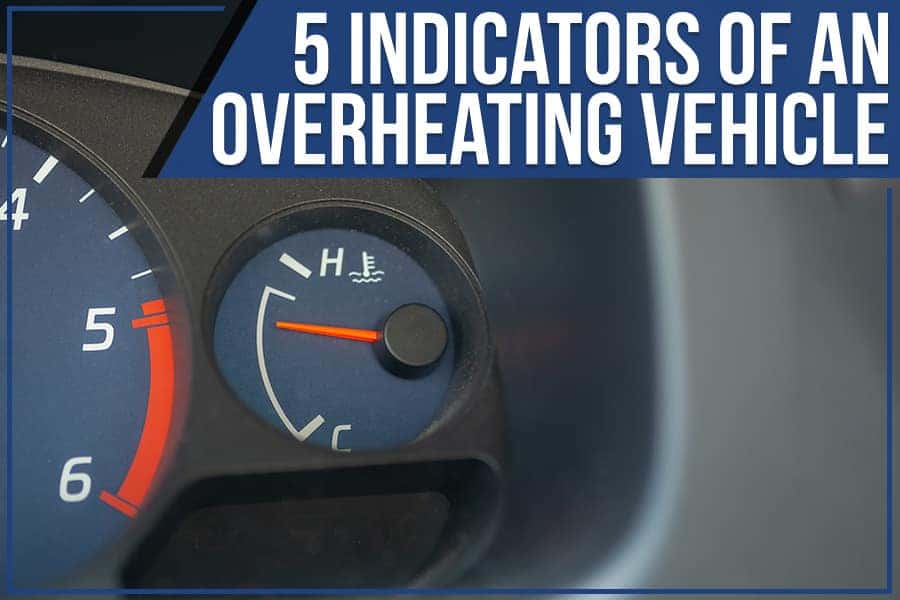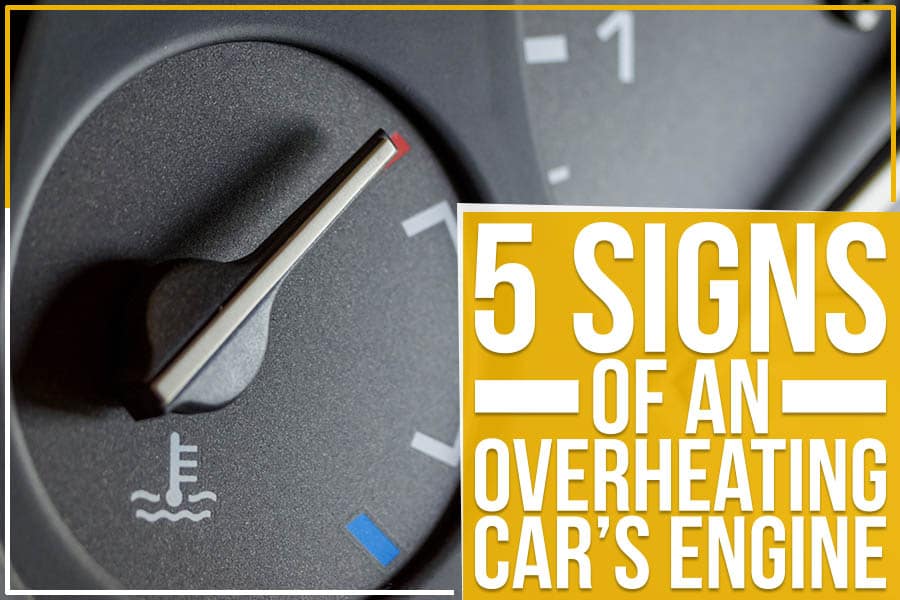To determine if your car is overheating, check if the temperature gauge is in the red zone or if steam is coming from the engine. Car overheating is a common issue that can lead to significant damage if not addressed promptly.
Identifying the signs of an overheated engine is crucial for every car owner to prevent potential breakdowns or expensive repairs. While there are various warning indicators, such as a temperature gauge in the red zone or steam emanating from the engine, it is essential to recognize these signs early on and take immediate action.
We will discuss in detail how to identify if your car is overheating, as well as the potential causes and steps to mitigate the issue. By understanding these signs and being proactive, you can ensure the optimal performance and longevity of your vehicle.
Understanding The Basics Of Car Overheating
Understanding the basics of car overheating is crucial for every driver. One common sign that your car is overheating is when the engine temperature rises rapidly. Keep an eye on your temperature gauge, as it can indicate if your car is reaching the red zone. If you notice the temperature gauge continuously increasing, it may be a clear sign of overheating. Another indicator is steam or smoke coming from the hood, which can be a result of coolant boiling or leaks. It’s essential to address these signs promptly to avoid further damage to your car’s engine. Remember to follow regular maintenance checks, including monitoring the coolant level, checking for leaks, and ensuring the radiator is functioning correctly. By keeping an eye out for these signs and taking preventive measures, you can avoid the unwanted stress of dealing with an overheated car.
Visible Signs Of An Overheating Engine
Visible signs of an overheating engine can help you determine if your car is experiencing this issue. One of the first indications is warning lights on the dashboard. These lights, such as the temperature gauge or the engine coolant light, typically illuminate to alert you of high engine temperatures. Additionally, an increased coolant temperature can be a sign of overheating. If your car’s temperature gauge shows a higher reading than normal, it is important to take immediate action. Moreover, unusual engine noises, such as a loud grinding or whining sound, can indicate an overheating engine. If you hear any abnormal sounds coming from your car’s engine, it is crucial to address the issue promptly to prevent further damage.
Physical Symptoms Of An Overheating Car
Physical symptoms of an overheating car include loss of power or acceleration, an unevenly running engine, and a burning smell. Loss of power or acceleration can occur when the engine is struggling to function properly due to the excessive heat. This can make it difficult for the car to maintain its speed or increase its speed. An unevenly running engine is another indicator of an overheating car. It may feel like the engine is sputtering or misfiring, causing the car to run rough and not perform at its optimum level. Additionally, a burning smell can be a sign of overheating. This often occurs when the engine components are heating up beyond their normal operating temperature and can emit a distinct burning odor. If any of these symptoms are present, it is important to address the issue promptly to avoid further damage to the car’s engine.
Checking Coolant Levels And System
Wondering if your car is overheating? One way to check is by monitoring the coolant levels and system. Regularly inspecting and maintaining these components can help prevent engine damage and keep your vehicle running smoothly.
| Checking coolant levels and system |
| Regularly monitoring your car’s coolant levels is crucial in detecting overheating issues. Start by inspecting the coolant reservoir, which is usually transparent and has “low” and “high” indicators. Make sure the engine is cool before opening the cap. If the coolant level is below the “low” mark, refill it with the appropriate coolant mix, following the manufacturer’s recommendations. |
| Coolant reservoir inspection |
| Examine the coolant reservoir for any signs of irregularities, such as discoloration, floating debris, or oil contamination. These can indicate potential issues with the cooling system or engine. If you notice any abnormalities, consult a qualified mechanic for further inspection and repair. |
| Radiator cap examination |
| Check the radiator cap for any signs of damage or leaks. The cap should fit tightly and securely to maintain proper pressure levels within the cooling system. If the cap shows signs of wear or is not sealing properly, it should be replaced to prevent coolant loss and potential overheating. |
| Leaks and cracks evaluation |
| Inspect the various components of the cooling system for leaks and cracks, such as hoses, connections, and the radiator itself. Look for any visible signs of coolant leakage or damage, as these can lead to overheating. If you notice any issues, promptly address them by repairing or replacing the affected parts. |
How To Identify Radiator Issues
Overheating in a car can cause major damage if not addressed promptly. One way to identify radiator issues is to check for damaged or clogged radiator fins. These fins, located inside the radiator, play a crucial role in heat exchange. If they are bent, corroded, or blocked by debris, airflow becomes restricted and cooling efficiency decreases. Another sign is restricted airflow. Observe whether the temperature rises when the vehicle is idling or moving slowly. If this happens, it could indicate a problem with the fan or a blockage in the airflow path. Additionally, be on the lookout for radiator fluid leaks. Leaking coolant can cause the engine to overheat and leave puddles under the vehicle. Regularly inspecting the radiator for any signs of damage or leaks is important to prevent overheating issues.

Credit: www.jerryulmchryslerdodgejeepram.com
Assessing The Cooling System Components
The cooling system of your car is crucial for its proper functioning and preventing overheating. Regularly assessing the various components of the cooling system can help you detect potential issues early on.
The water pump plays a vital role in circulating coolant throughout the engine and radiator. Inspect the water pump for any signs of leaks, corrosion, or damage. Ensure that the pump is functioning properly and that the coolant is circulating effectively.
The thermostat regulates the flow of coolant into the radiator, allowing the engine to maintain a stable temperature. Check the thermostat for any signs of wear or malfunction. A faulty thermostat can lead to overheating or inefficient cooling.
The fan belt drives the engine’s cooling fan, which helps to cool the radiator. Examine the fan belt for any signs of wear, cracks, or looseness. A loose or damaged fan belt can prevent the fan from operating properly, resulting in inadequate cooling.
Common Causes Of Overheating
In order to determine if your car is overheating, you need to be aware of the common causes that may lead to this problem. One possible cause is coolant leakages. When the coolant is leaking, the engine may not be able to maintain its proper temperature, resulting in overheating. Another potential cause is a malfunctioning thermostat. If the thermostat is not working correctly, it may fail to regulate the flow of coolant, causing the engine to overheat. Additionally, a faulty radiator fan can contribute to overheating. The radiator fan is responsible for cooling down the coolant and if it is not functioning properly, the engine may overheat. It is essential to address these issues promptly to avoid further damage to your car’s engine.
Importance Of Regular Maintenance
Regular maintenance is crucial to ensuring that your car does not overheat. One important aspect of maintenance is flushing the cooling system. Over time, the cooling system can accumulate sediment and debris, which can hinder its ability to regulate the engine’s temperature. Flushing the cooling system involves draining the old coolant and replacing it with fresh coolant, ensuring optimal performance. Another maintenance task is replacing coolant and other fluids. Coolant plays a vital role in dissipating heat from the engine, so ensuring it is clean and at the correct level is essential. Additionally, periodically checking and replacing other fluids such as oil and transmission fluid can prevent overheating issues. Lastly, scheduling inspections and tune-ups at regular intervals allows mechanics to identify any potential issues before they worsen, helping to prevent overheating problems. By following these maintenance practices, you can keep your car running smoothly and avoid costly repairs associated with overheating.
Preventive Measures To Avoid Overheating
Regularly checking your coolant levels is an important preventive measure to avoid your car overheating. Low coolant levels can lead to inadequate cooling of the engine, resulting in overheating. Keep an eye on the coolant reservoir and top it up if necessary, making sure you use the correct coolant mix for your vehicle.
Look out for warning signs that your car may be overheating. These can include an increase in engine temperature on your dashboard gauge, steam or smoke coming from the engine compartment, a sweet smell of coolant or a puddle of coolant under your car. If you notice any of these signs, pull over and turn off the engine to prevent further damage.
Avoid driving in extreme conditions that can put extra strain on your car’s cooling system. This includes driving in hot weather, climbing steep hills, towing heavy loads, or driving with a malfunctioning radiator fan. Give your car a break in these situations, allowing the engine and cooling system to cool down and prevent overheating.
Emergency Actions When Your Car Overheats
When your car overheats, it’s important to take emergency actions to prevent further damage. The first step is to safely pull over and park your vehicle in a safe location away from traffic. Turn off the engine immediately to help cool it down. Allow the engine to cool down naturally by opening the hood and giving it time to dissipate heat. Avoid opening the radiator cap while the engine is still hot to prevent burns. Once the engine has cooled down, check the coolant level and add more if necessary. If you don’t have access to coolant, water can be used as a temporary solution. Remember to consult a professional mechanic if your car continues to overheat, as there may be an underlying issue that needs to be addressed.
Importance Of Professional Assistance
When your car starts overheating, it is important to seek professional assistance to prevent further damage and costly repairs. A qualified mechanic can provide a proper diagnosis and repair to address the issue at hand. They have the knowledge and experience to identify the root cause of the overheating problem, whether it be a faulty radiator, a malfunctioning water pump, or a blown head gasket. By entrusting your car to a professional, you can ensure that the necessary repairs are done correctly and effectively. Additionally, a mechanic can also provide valuable advice on preventing future overheating issues, such as regular maintenance and monitoring of coolant levels. Taking prompt action and seeking help from a qualified mechanic is crucial to keep your car running smoothly and efficiently in the long run.
Conclusion
Being able to recognize the signs of an overheating car is crucial for avoiding potential damage and costly repairs. By paying attention to warning lights, unusual smells, and changes in engine performance, you can quickly identify if your vehicle is experiencing overheating issues.
Promptly addressing the problem by stopping and allowing the engine to cool or seeking professional help can help prevent further damage and ensure the safety and longevity of your car. Stay vigilant and take action when needed to keep your car running smoothly.

